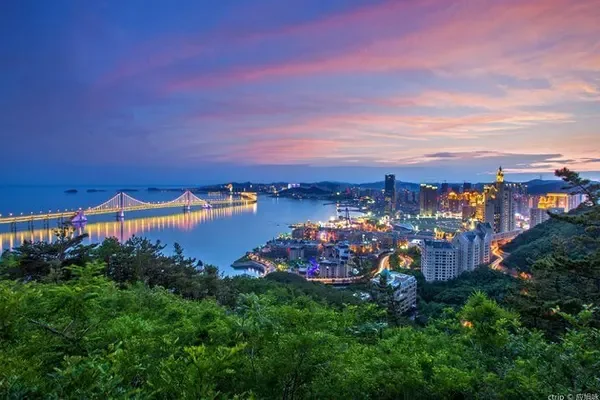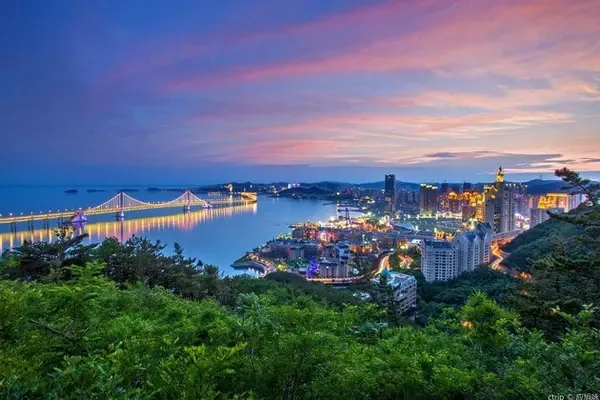Yushu, Qinghai belongs to the typical plateau alpine climate, its main features are high cold and hypoxia, and strong ultraviolet rays, but these harsh climates have not affected the original beauty of Lebagou.
In 2001, the 50th anniversary of the founding of Yushu, Qinghai, I went to Lebagou for the first time. It was summer, and the gurgling water bred coolness. It was raining lightly at that time, and the Mani stones in the water were clearly visible. After a lapse of 17 years, in the winter of 2018, I walked into Lebagou again, from a handsome boy to a middle-aged uncle.
According to legend, the Lebagou Scenic Area is the remains of rock paintings left by Princess Wencheng and Princess Jincheng when they entered Tibet successively. In 641 A.D., Emperor Taizong of Tang Dynasty married Princess Wencheng to Tubo Zanpu Gampo. Her influence was also very important when Princess Wencheng entered Tibet. They brought poems, agricultural books, Buddhist scriptures, history books, medical books, calendars and other classics, which promoted the economic and cultural development of Tubo and strengthened the friendly relationship between the Tubo people. In addition, the princess also brought a 12-year-old Sakyamuni Buddha statue , is still enshrined in the Jokhang Temple in Lhasa, a holy place, and has become a Buddha statue worshiped devoutly by the Tibetan people.
Lebagou is located in the mountains on the south bank of Tongtian River, 30 kilometers away from Jiegu Town, Yushu Prefecture. In fact, every winter in Tongtian River, there are so many devout Tibetan people writing huge words on the frozen river with the fine sand on both sides of the river. The six-character mantra and use it as a bridge to pray for health and safety in the coming year. It is also to commemorate Princess Wencheng's entry into Tibet. After a few days of sunlight, another spectacle will appear after the written scriptures, fine sand and ice Blended together, it forms a beautiful and spectacular ice mani.
"Lebagou" means "beautiful ditch" in Tibetan. The natural scenery in the ditch is just like a cubic picture scroll: snow-covered ice peaks on the top of the mountain, pines and ancient cypresses on the mountainside, strange rocks and rocks, mist and gauze, gurgling water at the bottom of the valley, Yinyin Fangcao. From top to bottom, the layers are clear and pleasing to the eye. Lebagou is also the world of mani. At the mouth of the ditch, there are stone carvings of the Buddha in the Tang Dynasty. In the valley, there are mani stones carved with Buddha statues and Buddhist scriptures all over the mountains and plains. It is called "Buddha statue ditch" and "Buddhist scripture ditch". In Lebagou, mani stones engraved with the six-character mantra of Avalokitesvara Bodhisattva and - are all over the head and can be seen everywhere. Some are exposed under the sun, some are submerged in the stream, some are hidden in the shade of grass and forests, and some are reflected on the cliffs, forming a huge petrified landscape. There are countless mani stones in the ditch. The Tibetan and Sanskrit "six-character mantras" that condense all the teachings of Buddhism are engraved on large and small rocks. Each character is painted with a different color, colorful and mysterious.
In the small stream in the ditch, there are many mani carved by local Buddhist believers, which are called water mani. There are many kinds of engraved scriptures on Mani, but most of them are six-character mantras. Then the six-character mantras are "Om, Well, Nea, Ba, Mi, Hum". Six kinds of afflictions, practicing six prajna practices, obtaining six kinds of Buddha bodies, giving birth to six kinds of wisdom, etc. This mantra is the heart mantra of Avalokiteshvara, and reciting this mantra often can benefit and delight all living beings, with immeasurable merit.
In today's Lebagou, apart from modern cars and modern people, everything else is ancient, with ancient streams, ancient characters, ancient petroglyphs, ancient legends, authentic and antique. Because the stream flowing through Lebagou is full of mani stone carvings, some experts came here to investigate and marveled that this is the only river in the world with words flowing.
tips


